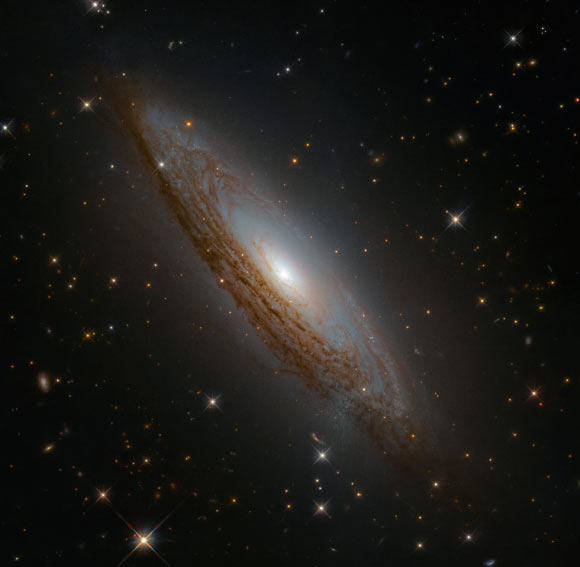Hubble Space Telescope Looks at Active Spiral Galaxy | Astronomy – Sci-News.com
The NASA/ESA Hubble Space Telescope has produced a beautiful image of a spiral galaxy called ESO 021-G004.

This Hubble image shows ESO 021-G004, a spiral galaxy located approximately 130 million light-years away in the constellation Chamaeleon. The color image was made from separate exposures taken in the visible and infrared regions of the spectrum with Hubble’s Wide Field Camera 3 (WFC3). Two filters were used to sample various wavelengths. The color results from assigning different hues to each monochromatic image associated with an individual filter. Image credit: NASA / ESA / Hubble / D. Rosario et al.
ESO 021-G004 is a moderately luminous spiral galaxy at a distance of about 130 million light-years.
Otherwise known as LEDA 47660, this galaxy resides in the small southern constellation of Chamaeleon.
ESO 021-G004 is oriented such that its disk is seen nearly edge-on.
It has prominent dust lanes — the major sites of star formation — in the disk and an active galactic nucleus in its center.
“While this phrase sounds complex, this simply means that astronomers measure a lot of radiation at all wavelengths coming from the center of the galaxy,” the Hubble astronomers said.
“This radiation is generated by material falling inwards into the very central region of ESO 021-G004, and meeting the behemoth lurking there — a supermassive black hole.”
“As material falls towards this black hole it is dragged into orbit as part of an accretion disk,” they explained.
“It becomes superheated as it swirls around and around, emitting characteristic high-energy radiation until it is eventually devoured.”






